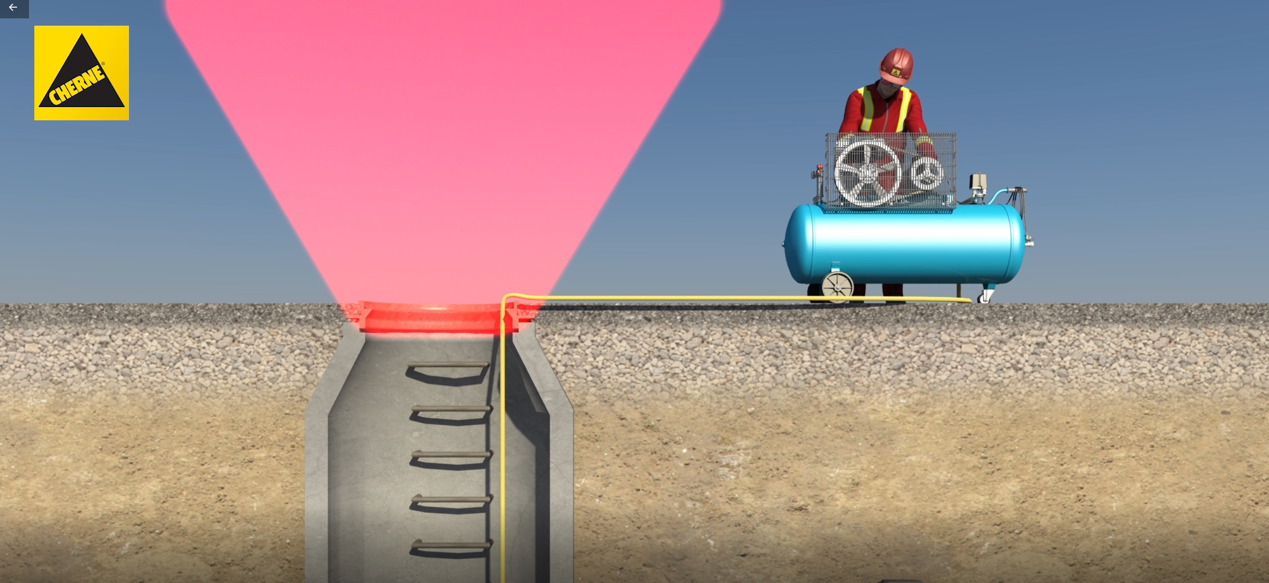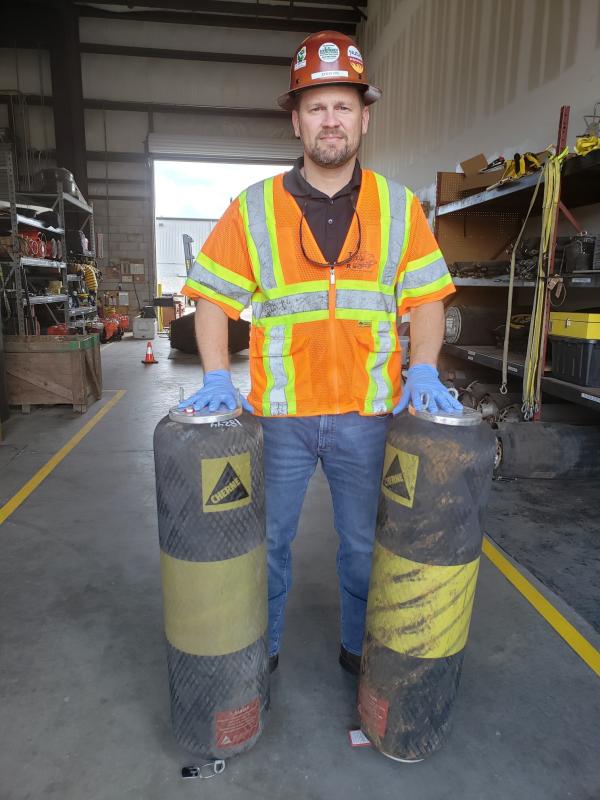Safety
Your safety is our top priority. Through rigorous quality control and state of the art manufacturing technologies, Cherne products ensure you will get the job done safely.
Test Plug Safety Precautions
Follow these detailed instructions for proper use, storage, and maintenance of Cherne pneumatic test plugs.
Download our Safety & Instruction Manual
Preparation Before Use
- Plug Selection: Select the proper plug and related equipment. Every pipe plug has performance specs listed on the plug and /or in the literature. Contact Cherne Industries or dealer for recommendations.
- Back Pressure Determination: Determine maximum back pressure the plug must withstand. Back pressure is the pressure (air or liquid) in front or back of the plug that it must restrain. Never exceed the plug’s back pressure rating. Maximum back pressure ratings listed are for plugs installed in clean, dry pipe of nominal size. Usage of plugs in pipeline that varies from these conditions could reduce maximum allowable back pressure.
- Plug Size Selection: Pipe plugs have a minimum and maximum sealing size range. Verify the pipe inside diameter is within the plug’s sealing (usage) range.
- Pipe Design: Plug performance could vary depending on pipe types. For example, in corrugated pipe, plug back pressure rating drops by 50%. Contact Cherne Industries or dealer for recommendations.
- Calibrated gauges: Failure to use calibrated gauges could result in plug over-inflation or under-inflation which could lead to plug failure. Monitor inflation and back pressure with calibrated pressure gauges only. Use calibrated gauges and proper hoses to monitor pressure, inflate, and deflate the plug from outside of danger zone. Contact Cherne Industries or dealer for recommendations.
- Cleaning and Inspection: Plugs must be clean and inspected before and after every use. Do not use a plug if it has or shows any signs of wear or deterioration. All natural rubber products degrade over time, even if they are used infrequently, stored properly, and show no external forces behind the plug could be tremendous. A properly designed blocking or bracing device must be used to restrain any plug movement.
Operation
- Place the plug in the pipe or application to be blocked or tested making sure it is positioned inside the pipe or application a distance at least equal to the pipe or application diameter.
- Connect one end of inflation hose to the plug inflation fitting (such as Schrader valve, 1/4", 3/8", 1/2" port etc.). The other end of the inflation hose is connected to line pressure, pump or another supply pressure device. Always use an appropriate method to dump the pressure after application.
- If another fitting (such as Schrader valve, 1/4", 3/8", 1/2" port etc.) is available, connect a second hose to the fitting. The other end of the second hose should be connected to a calibrated gauge. This second hose is a pressure read back hose.
- Make sure to block/brace the plug using appropriate method before inflating the plug.
- Introduce pressure to the plug through the inflation hose. Inflate the plug to the rated inflation pressure listed on the plug. Contact Cherne Industries or dealer for recommendations.
- Let the plug stabilize for a few moments. Add pressure if needed to maintain rated inflation pressure.
- Proceed with testing pipe, application, or other use of plug. After test, application, or use of the plug is complete, release all back pressure behind the plug from outside the danger zone.
- When all back pressure is released, relieve plug pressure from outside
the danger zone until the plug is completely deflated. - Remove blocking/bracing system. Remove plug from pipe and follow storage instruction.
Maintenance and Storage
The plug may be cleaned with mild soap and water (other cleaning agents may cause damage).
Inflate plug with 1 psig to inspect the plug after every use. Plug should not be used if it shows any signs of cut, wear or deterioration. A damaged plug is unsafe and should not be used again.
Never inflate plug more than 1 psig when the plug is outside of a pipe. Plug damage and failure could occur.
Store the plug in a dry place away from sunlight or other sources of ultra-violet light and ozone. Plugs must be stored below 110°F and can be stored suspended vertically or placed horizontally.
Cherne Safety Video
The Danger Zone
Always be aware of danger zones. When a plug is in use, a danger zone exists that expands outwardly in a cone shape. Never enter this danger zone.


How Rupture Discs Protect Against Over-Inflation
The No. 1 problem is over-inflating the plug after it has been inserted into a pipeline. Sometimes, when a contractor is not getting a good seating of the plug against the pipe, they mistakenly assume what's needed is more pressure. In the past, when they would do that, the plug would go boom.
Fortunately, Cherne has developed a very nice solution to this problem, fitting the end of the plug with a field-replaceable rupture disc to project against over-inflation. When the customer does over-inflate the plug, the disc blows out, but the plug seals back up and can get used again.
- Todd Larsen, Lee Jensen Sales